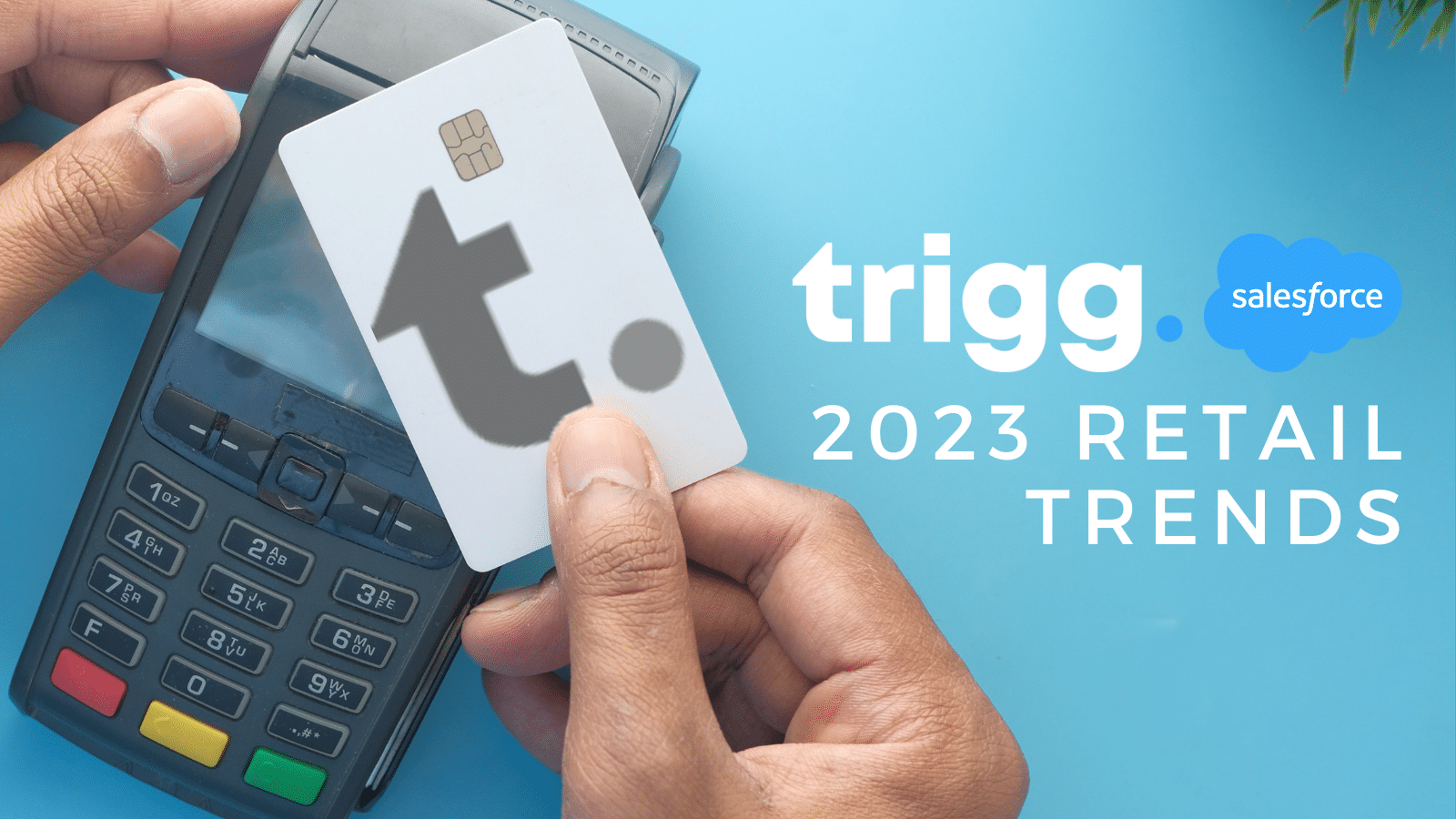The global retail industry has had a difficult couple of years – some big names went into administration during the pandemic and even now, two years on from the worst of it, the pressure isn’t letting up. Supply chains have been affected by everything from strikes and extreme weather events to geopolitical conflicts, and rising inflation is also affecting consumers’ shopping habits.
We appreciate that it can be hard to keep up with fickle consumer preferences and fast-moving tech so, to help our friends in retail hit the ground running in Q2 and beyond, we’ve taken a look at what’s on the horizon for the industry.

- Retail Media Networks
Both physical and online stores are becoming increasingly crucial as advertising sources for vendors – advertisers and marketers alike are turning to retail media networks (RMNs) to help their products or services reach new customers. Essentially, an RMN is an advertising network set up by a retailer, giving advertisers access to their consumer data and advertising space in their channels. RMNs have huge potential, helping advertisers to target new customers and giving them a higher return on ad spend (ROAS).
RMNs have had an unstoppable rise in recent years – last year, it was predicted the global retail media industry would reach $101 billion (£81 billion). More and more retailers – from supermarkets to pharmaceutical retailers – have been creating new revenue streams with RMNs, taking advantage of the first-party data available through their consumer loyalty schemes.
Looking to set up your own RMN? Check out our recent blog on how to stay ahead of the competition.
In order to set up, scale and manage a successful RMN, retailers need a strong platform to build on. This is where Salesforce comes in. Marketing Cloud Intelligence – powered by Datorama – unifies marketing data from multiple different sources and applications, generating reports and providing better visibility of customers’ wants and needs, as well as a clearer understanding of how to optimise sales and marketing activity.
Meanwhile, Salesforce Genie allows retailers to build a single customer record by capturing all their data in one place, from analytics to customer insights. As well as improving customer experience, this can also help to give retailers and their advertisers alike increased transparency and accountability. With Salesforce, you’re able to build a seamless customer journey – from acquiring and onboarding advertisers to planning and optimising campaigns for performance, revenue reconciliation and billing. To find out more, and learn how Salesforce’s tools can be used to help set up an RMN, check out this blog from #TeamTrigg.

- Social Media Sentiment Monitoring
Social media monitoring is a way for businesses to get feedback from their customers, by collecting and analysing information on how people talk about them online. It’s a way for retailers to get a far more accurate idea of what their customers really think of them, as well as their general preferences and behaviour. When executed alongside social media listening, which monitors the tone and emotions of social media conversations, this process can provide a comprehensive view of the customer’s attitude to your brand and its competitors. An important part of the customer journey, social listening and monitoring allow retailers to keep up with their customers’ changing needs and opinions, predict future trends, and build relationships to improve customer loyalty.
There are plenty of tools out there for any business looking to gather as much information as possible on how customers perceive their brand. One of the best is Salesforce Genie, which collects data from all available sources, including social media networks, and provides real-time updates – all of which can be viewed together in one unified platform. It can also be used in conjunction with tools like Sprout Social, which Salesforce partnered with last year. By integrating the social media suite with their Salesforce solutions, brands can keep an eye on any key search terms, allowing them to act immediately on any content shared regarding their brand, industry or relevant topics. Genie can even automate these actions. For example, if a particularly negative tweet is sent out about your brand, Genie could be programmed to automatically alert the PR team, or better yet, find out more from the customer instantly and offer a discount or a voucher to return for a better experience. Clever, isn’t it?!

- Hybrid Shopping
This year will see more retailers looking to deliver a seamless experience across all of their shopping methods, from online and in-store to mobile devices, social media, and live streaming. Retailers are increasingly combining their digital presence with brick-and-mortar stores as they aim to reach both online and offline customers – and give them the same experience, no matter what shopping method they choose. Some brands have even chosen to design their stores with integrated omnichannel customer journeys, blending the digital and physical worlds to give customers more memorable experiences.
Take the make-up brand Sephora, for example. Sephora customers can use the brand’s app to book appointments for consultations and in-store makeovers before heading to the store. They can then use the app as a virtual personal shopper, checking if items are in stock in nearby stores and/or providing reviews from previous customers. All the while, Sephora is collecting more data on its customers’ preferences, behaviours and buying habits, allowing it to provide a more personalised experience. It’s not just Sephora, either – Nike launched the ‘Instant Checkout’ feature on their mobile app recently, which allows customers to scan a QR code on a product label in-store and pay directly from their device, with no need to queue.
By unifying their data and customer insights with Salesforce’s Customer 360, brands can offer shoppers a more seamless omnichannel shopping experience. One of these tools, Commerce Cloud, helps to build experiences across all channels — including mobile, social, web, and store. This way, retailers get a single, shared view of everything from customer activity to product inventory and promotions. Alongside this, Marketing Cloud can help retailers to optimise each ad campaign, using data-first enterprise solutions for every channel and device while Salesforce Genie optimises and automates their marketing activity in real-time. Plus, Service Cloud can automate often lengthy customer service processes, helping retailers offer a seamless customer service journey, enhance the efficiency of their service teams, and increase customer lifetime value (CLTV).

- Artificial Intelligence
There have been some big developments in artificial intelligence (AI) recently, and you can expect more retailers to start leveraging this technology in 2023 and beyond. ChatGPT, for example, hasn’t been out of the headlines since it was launched in November last year, and companies like Google and Bing are following in ChatGPT’s footsteps. Earlier this year, Salesforce announced Einstein GPT, the world’s first generative AI CRM technology, to help Salesforce users and their customers.
But AI is not just useful for writing essays and developing chatbots – it could also completely transform the retail industry. In fact, in Chat GPT’s own words, AI has the potential to transform the retail industry by:
- enabling personalised shopping experiences
- improving inventory management
- optimising supply chain management
- detecting fraudulent activity
- enhancing customer service
- enabling visual search
- analysing customer data to predict future demand, helping retailers to optimise their inventory levels and avoid stock outs or overstocking
Salesforce Einstein has state-of-the-art AI services built into it, so businesses can build apps and chatbots, automate time-consuming processes, and much more, helping their teams to be more efficient and productive. With the recent advances in AI, however, you can expect to see AI tools becoming even more powerful and more useful over the next 12 months, and more AI-powered products and services being launched. Some companies may even start using AI as a fully-fledged member of the team – it’s certainly something that all businesses will need to start using unless they want to get left behind.
Companies like Microsoft and Google have already launched AI-powered tools, and they’re not alone – Salesforce has just announced its very own Einstein GPT. The tool is the world’s first generative AI designed for CRM, and it’s set to transform every customer experience, saving businesses both time and money. It can be used in sales, service, marketing, commerce, and even IT, generating everything from personalised emails for customers to code for developers to use.

- The Metaverse
A virtual world that combines virtual reality, augmented reality and blockchain, the metaverse gives customers an immersive environment to explore and interact with other people or brands. It’s growing fast, too! The global metaverse market hit $100.27 billion (£ 83.4 billion) last year and is expected to grow to $1,527.55 billion (£1,272 billion) by 2029.
One of the primary benefits of the metaverse for the retail industry is that it can help retailers overcome the challenges posed by more traditional brick-and-mortar stores. In the metaverse, retailers overcome physical space limitations and expand their product offerings beyond what is possible in a physical store, all whilst reducing overhead costs and offering a more personalised experience. And they know it, too! Brands like Nike and Balenciaga have already opened retail offerings in the metaverse, with Nike also selling virtual shoes for users’ avatars to wear.
Salesforce has launched into the metaverse with Salesforce Genie, which is at the heart of the Salesforce Customer 360 platform, enabling businesses to get even more insight into their customers with a 360-degree view of their customers’ behaviour and activity. The metaverse unlocks another stream of data, which sales and marketing teams are able to access by using tools like Sales Cloud or Marketing Cloud.
One thing that the metaverse is set to transform is remote working. Users working from home would be able to put on their VR headset, log on to the metaverse, and interact with their colleagues – even if they’re on the other side of the world, they could work together in real time. Salesforce’s tools like Slack already help teams to work together closely and share files from anywhere in the world, but the metaverse would be able to take this one step further.
—————
If there’s one thing we know about the retail industry, it’s that it is always changing.
Customers’ needs continue to shift, new technological innovations continue to change the way that they shop, and businesses continue to adapt to new challenges. By understanding the latest trends and incorporating them into your strategy, your retail business will stay ahead of the curve.
Our specialist retail team knows what’s what when it comes to maximising retail ROI and efficiency. From global beauty brands to online marketplaces, we’ve implemented projects that have completely revolutionised marketing, sales and customer services processes. We’re always one step ahead of the industry, and have all the Salesforce knowledge needed to design and implement a solution to make sure you are, too.
Get in touch with us today to find out more.
+44 203 239 8492
hello@triggdigital.com
- Revolutionise Customer and Employee Experience’s with Agentforce! 🚀 - December 17, 2024
- How Data, AI and AI Agents Are Transforming industries - December 17, 2024
- On Demand Webinar: AI and Salesforce Einstein for Service - May 30, 2024



